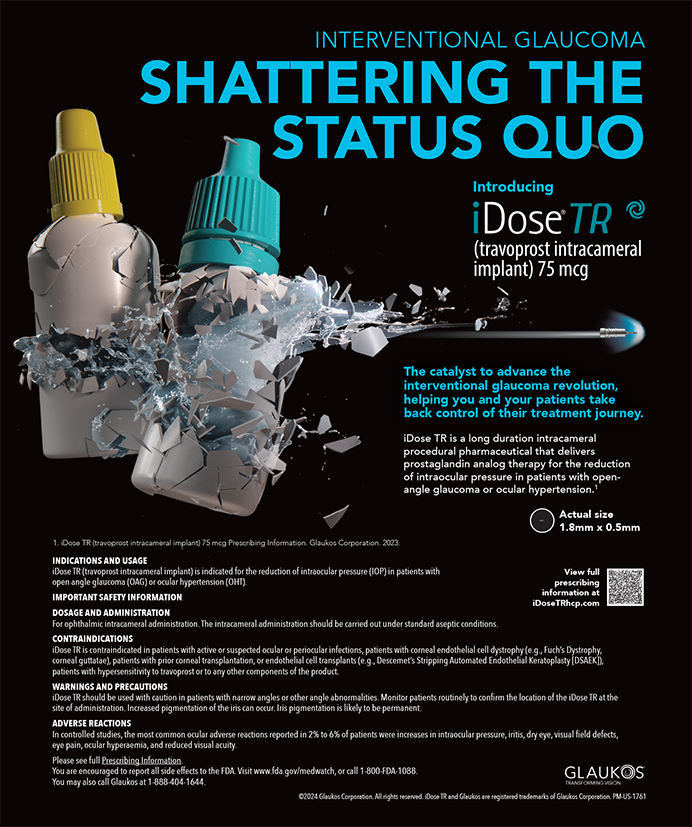
Beyond the basics of artificial tears and warm compresses, we providers are practicing in an era when the number of over-the-counter and prescription medications and in-office treatments for ocular surface disease (OSD) has exploded. The incidence of OSD is growing globally in all age groups, with estimates suggesting that less than half of affected patients have been diagnosed with OSD.1 On top of this, the increase in the number of people engaged in online education and remote work during the COVID-19 pandemic has led, in my experience, to more significant OSD in young patients, including children and adolescents.
This article outlines the necessary steps to building an OSD service in your practice so you can start treating these patients.
Identify Patients
OSD questionnaires. The first step toward offering OSD services in your practice is to listen to your patients and ask them about common symptoms of OSD. Entrance surveys for OSD such as the Standardized Patient Evaluation of Eye Dryness, Ocular Surface Disease Index, and Dry Eye Questionnaire 5, among others, should be incorporated into the workup of all patients. These surveys target symptoms and rate their severity from the patient’s perspective. This information allows you and your staff to identify more patients with undiagnosed OSD and to monitor the effectiveness of treatment. A bonus is that these tools make it easier for patients to track their improvement from one visit to the next, which can provide motivation for them to continue therapy.
It is also important to review patients’ systemic health and medication history because many systemic diseases and medications can contribute to OSD. Training your staff to perform a thorough patient history will improve their ability to identify individuals who are experiencing OSD or who may develop the condition in the future.
Look for the Signs
Actively look for the clinical signs of OSD during examinations at the slit lamp. This includes assessing the lid margin for infectious and inflammatory indicators such as lid telangiectasia, scurf from blepharitis, and the cylindrical collarettes associated with Demodex.
Express the meibomian glands. Manual expression of the meibomian glands provides insight into their function. Properly functioning, healthy glands should quickly express nearly clear meibum. In mild cases of meibomian gland dysfunction, meibum may have a cloudy, yellow appearance. In severe cases of meibomian gland dysfunction, meibum may have a toothpaste-like quality. At worst, the application of firm pressure to the lid margins produces no secretion. Recording the result of expression from the lower lids in the patient chart is helpful for tracking progress with treatment.
Additionally, incomplete blinking and eyelids that seal poorly upon closure can increase the likelihood of OSD.
Stain the corneal surface. The use of vital dyes such as fluorescein and lissamine green can highlight the damage to the ocular surface that is common among patients with OSD. Fluorescein staining of the corneal surface reveals punctate epithelial damage and allows an assessment of tear breakup time. Lissamine green staining of damaged areas of the conjunctiva or the lid margin indicates poor tear film function and OSD.
Image the anterior segment. Meibography and tear film imaging have opened the door to the objective assessment of the lid structures and ocular surface. An added benefit is that these images can be used to show patients the areas of concern and help explain how treatment can address the findings. Several of these devices can be added to slit-lamp microscopes or positioned in the pretest area.
Test tear osmolarity levels and inflammatory markers. Tear osmolarity levels (TearLab Osmolarity System, TearLab) and the presence of the inflammatory marker matrix metalloproteinase 9 (InflammaDry, Quidel) can be evaluated in a clinical setting with tests waived under the Clinical Laboratory Improvement Amendments. Measuring the degree of inflammation at the ocular surface and tear osmolarity can help guide treatment.
Treat OSD
After identifying patients with OSD, the next step is to treat it. Fortunately, treatment options have expanded in the past decade. Offering supplements, artificial tears, and hot compresses can help patients and add a new revenue stream to your practice. Additionally, in-office procedures have expanded significantly beyond punctal cautery and occlusion.
Lid debridement. This can help reduce bacterial biofilms and keratinization to the lid margin.
Intense pulsed light (IPL) therapy. One of the most significant changes to the landscape of OSD treatment is the use of IPL for photobiomodulation to treat inflammation affecting the lid margins. IPL directly targets inflammation within the lid tissue and increases meibomian gland function.
Thermal pulsation. Multiple devices are designed to direct heat to the meibomian glands, including LipiFlow (Johnson & Johnson Vision), Systane iLux MGD Thermal Pulsation System (Alcon), and TearCare (Sight Science). These devices heat meibum within the lids until liquification to permit in-office expression.
Topical drops. There are currently three widely available topical antiinflammatory/immunomodulatory drops for ocular surface inflammation:
- Cyclosporine ophthalmic emulsion 0.05% (Restasis, Allergan);
- Lifitegrast ophthalmic solution 5% (Xiidra, Novartis); and
- 0.09% cyclosporine ophthalmic solution (Cequa, Sun Ophthalmics).
Eysuvis (0.25% loteprednol etabonate ophthalmic suspension, Kala Pharmaceuticals), a topical steroid for short-term use to treat DED flares recently became available. For patients who have little or no insurance coverage for the previously listed medications, compounded 0.1% cyclosporine (Klarity-C, ImprimisRx) may be beneficial.
Market Your OSD Service
Make it a point to market your new service. In my practice, we use video terminals in the front reception area and the examination rooms that describe the symptoms of OSD and the services our practice offers and share a few success stories from previously treated patients. Using patient testimonials in internal marketing and social media can be an effective, low-cost method to boost OSD patient volume. Let people know about the services provided in your practice and specify their potential benefits.
Conclusion
Once you start to ask your patients about OSD, begin actively looking for it, and start treating it, you will likely see a substantial volume of candidates for OSD treatment during your typical clinic day. I encourage you to survey your patients to gauge their interest in an OSD service and to start small. Although the diagnostic tests and specialized treatment options mentioned in this article are helpful, they are by no means required to create an OSD service in your practice. The key is to start!
Whether you choose to carve out a specialty clinic or keep OSD services as part of your daily schedule, an OSD service can be a substantial practice builder and a boon to your bottom line.
1. Tian YJ, Liu Y, Zou HD, et al. Epidemiologic study of dry eye in populations equal or over 20 years old in Jiangning District of Shanghai. Zhonghua Yan Ke Za Zhi. 2009;45(6):486-491.




